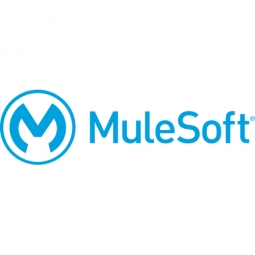Customer Company Size
Large Corporate
Region
- Pacific
Country
- Australia
Product
- MuleSoft's Anypoint Platform
Tech Stack
- MuleSoft's Anypoint Platform
Implementation Scale
- Enterprise-wide Deployment
Impact Metrics
- Digital Expertise
- Customer Satisfaction
Technology Category
- Platform as a Service (PaaS) - Connectivity Platforms
Applicable Industries
- Education
Applicable Functions
- Business Operation
Use Cases
- Campus Area Network
Services
- System Integration
About The Customer
Deakin University is a public university located in Melbourne, Australia. It is one of Australia's leading tertiary education providers, offering a wide range of undergraduate and postgraduate coursework degrees. The university is known for its innovative use of technology in education and has a strong reputation for its research and teaching. The university has over 50,000 students and 4700 staff and faculty across four different campuses. The university's Chief Digital Officer, William Confalonieri, is leading the charge in embracing digital disruption and transforming the way students, academics, administrative staff, and the local community interact.
The Challenge
Deakin University, located in Melbourne, Australia, is facing significant challenges due to the arrival of the digital economy, changing funding models, and increased competition among educational institutions. The university needed to offer a unique service to its students to enhance their learning experience and stay competitive. However, students were struggling to learn efficiently due to disconnected applications. The university uses almost 200 applications across its operations, including learning management, student management, human resources, finance, and customer relationship management systems. The challenge was to integrate these systems to provide a seamless learning experience for students.
The Solution
To address the challenge, Deakin University implemented MuleSoft's Anypoint Platform to connect the university's 200 different applications. The platform was chosen for its pre-built connectors, integration templates, and drag-and-drop tooling, which eased the task of connecting applications. The university also engaged MuleSoft partner, Sixtree, for external assistance given the size of the integration project. One of the cornerstones of the university's strategy is DeakinSync, a personal portal for all individuals within the Deakin community, providing access to relevant University resources, customized to each person’s specific needs. The portal pulls in information from all the applications used across the university, creating a seamless digital environment accessed via a single sign-on.
Operational Impact
Quantitative Benefit

Case Study missing?
Start adding your own!
Register with your work email and create a new case study profile for your business.
Related Case Studies.

Case Study
Revolutionizing Medical Training in India: GSL Smart Lab and the LAP Mentor
The GSL SMART Lab, a collective effort of the GSL College of Medicine and the GSL College of Nursing and Health Science, was facing a challenge in providing superior training to healthcare professionals. As clinical medicine was becoming more focused on patient safety and quality of care, the need for medical simulation to bridge the educational gap between the classroom and the clinical environment was becoming increasingly apparent. Dr. Sandeep Ganni, the director of the GSL SMART Lab, envisioned a world-class surgical and medical training center where physicians and healthcare professionals could learn skills through simulation training. He was looking for different simulators for different specialties to provide both basic and advanced simulation training. For laparoscopic surgery, he was interested in a high fidelity simulator that could provide basic surgical and suturing skills training for international accreditation as well as specific hands-on training in complex laparoscopic procedures for practicing physicians in India.

Case Study
IoT platform Enables Safety Solutions for U.S. School Districts
Designed to alert drivers when schoolchildren are present, especially in low-visibility conditions, school-zone flasher signals are typically updated manually at each school. The switching is based on the school calendar and manually changed when an unexpected early dismissal occurs, as in the case of a weather-event altering the normal schedule. The process to reprogram the flashers requires a significant effort by school district personnel to implement due to the large number of warning flashers installed across an entire school district.

Case Study
Implementing Robotic Surgery Training Simulator for Enhanced Surgical Proficiency
Fundacio Puigvert, a leading European medical center specializing in Urology, Nephrology, and Andrology, faced a significant challenge in training its surgical residents. The institution recognized the need for a more standardized and comprehensive training curriculum, particularly in the area of robotic surgery. The challenge was underscored by two independent studies showing that less than 5% of residents in Italian and German residency programs could perform major or complex procedures by the end of their residency. The institution sought to establish a virtual reality simulation lab that would include endourological, laparoscopic, and robotic platforms. However, they needed a simulator that could replicate both the hardware and software of the robotic Da Vinci console used in the operating room, without being connected to the actual physical console. They also required a system that could provide both basic and advanced simulation training, and a metrics system to assess the proficiency of the trainees before they performed surgical procedures in the operating theater.

Case Study
Edinburgh Napier University streamlines long-distance learning with Cisco WebEX
• Geographically dispersed campus made in-person meetings costly and inconvenient.• Distance-learning programs in Malaysia, India, and China required dependable, user-friendly online tools to maximize interaction in collaborative workspaces.• Virtual learning environment required a separate sign-in process, resulting in a significant administrative burden for IT staff and limited adoption of collaboration technology.

Case Study
8x increased productivity with VKS
Before VKS, a teacher would spend a lot of time showing a group of 22 students how to build a set of stairs within a semester of 120 hours. Along with not leaving the teacher much time to provide one-on-one support for each student to properly learn carpentry, it also left a considerable amount of room for error. Key information would be misinterpreted or lost as the class was taught in the typical show-and-tell way.

Case Study
Scalable IoT Empowering GreenFlex's Sustainable Growth
GreenFlex, a company that supports sustainable development, decarbonization, and energy efficiency, faced several challenges in its quest to expand its business. The company needed to deploy a robust and sustainable IoT technology to support its growth. It was crucial for them to monitor and control devices at customer sites in a safe and reliable manner. They also needed to integrate devices across a range of communication protocols and gather and act on data to meet efficiency targets. GreenFlex had previously built IoT capabilities into its digital platform, GreenFlexIQ, to monitor and manage customer sites remotely. However, they soon realized that they needed a new platform to support their ambitions. They needed a platform that could scale to connect more devices for production management and make it easier for the operations team to manage devices in the field.







